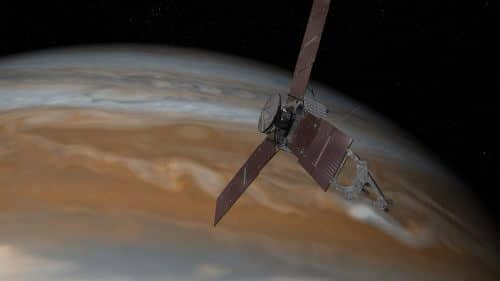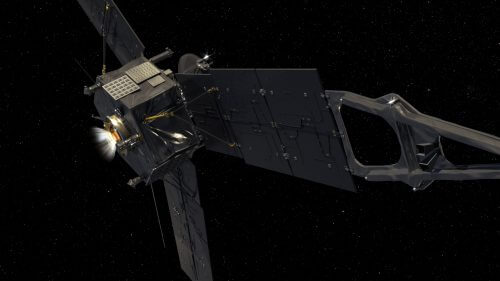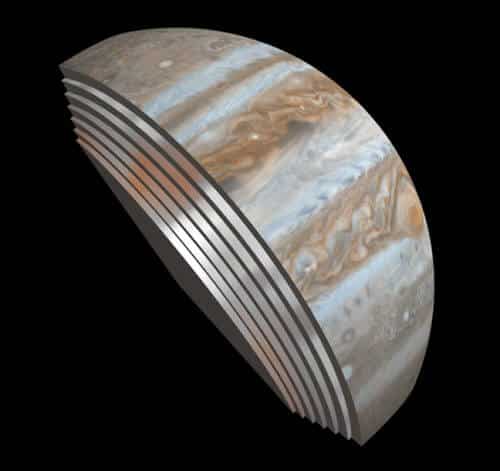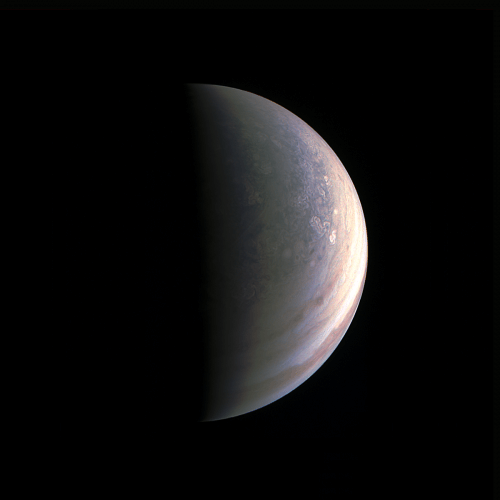While the eyes of the European Space Agency are directed towards Mars in the hope ofGood news from Skiparelli, the eyes of the American space agency are directed towards Jupiter and the Juno probe that studies it. NASA announced yesterday that the probe entered a safe mode and that during its last approach to Jupiter its scientific instruments did not work. In addition, due to a previous and unrelated malfunction in the rocket propulsion system, it was decided to postpone to December 11 a rocket burn that was supposed to put Juno into a 14-day operational orbit around Jupiter, instead of the current highly elliptical orbit that lasts 54.5 days.

NASA Has announced Because the Juno probe, QInvestigating the planet Jupiter Since July 4 of this year, it entered safe mode on October 18, 13 hours before the closest point to the planet in its orbit around it (periapseide), and therefore did not collect scientific data during its approach on Wednesday (October 19).
The probe is designed to enter "safe mode" when its computer system detects a non-nominal state. During the safe mode, all the scientific instruments and other functions of the spacecraft, which are not necessary for its basic function, are turned off, and it points its solar panels towards the sun to ensure electrical energy that will allow it to function and wait for commands from Earth. “[The spaceship] did exactly what it was supposed to do when it detects an unexpected situation” said Scott Bolton, the mission's principal investigator.
He went on to say that the problem that caused the entry into safe mode is not yet known, but apparently has nothing to do with the high radiation levels around Jupiter that could damage the probe throughout the mission. "It [entering the safe mode] happened quite far from Jupiter, so my instinct is that it probably has nothing to do with the intense radiation belts that we're so afraid of," Bolton said. Rick Neibakan, mission project manager at NASA's Jet Propulsion Laboratory (JPL), added that "the probe is healthy and we are following our standard recovery procedure." In addition, NASA's announcement emphasized that they are sure that Juno's solar panels are pointing towards the Sun.
This is the second time during Juno's mission that it has entered safe mode. The probe, which was launched to Tzedek in 2011, She entered to a safe mode on a near-Earth flight in 2013, then the reason for this was that during the flight her solar panels were hidden from the sun and a fault in her safety settings recognized this as a non-nominal situation, even though this was expected and planned.

Another and unrelated problem caused NASA to postpone the rocket burn that was planned to take place during the current approach to Jupiter. According to the original plan, the rocket burn was supposed to change the highly elliptical orbit around Jupiter that lasts 54.5 days, to an operational orbit of 14 days. However, a problem was discovered in the valve of the propulsion system caused NASA to postpone the burn, to assess its severity and examine how it can be repaired. During a rocket burn, the probe cannot use its scientific instruments, therefore the postponement of the rocket burn actually allowed it to collect scientific data from the current approach, which, as mentioned, did not come to fruition due to entering the safe mode. The next opportunity to fire the rocket will be on December 11.
Meanwhile, NASA revealed more scientific discoveries from the probe's previous approach to Jupiter on August 27. The probe discovered that the magnetic field and auroral phenomena of Jupiter are more powerful and larger than what was commonly thought until now.

Juno's Microwave Radiometer (MWR) provided some answers to one of the mission's key science questions. The radiometer is able to peer into the depths of Jupiter's atmosphere to depths of 400-350 km. From the data he collected it can be determined that the belts that are visible at the top of the atmosphere continue deep into it, and are not just an external phenomenon. "With the MWR data, it's like taking an onion and starting to peel back its layers to see the structure and processes underneath," said Scott Bolton. "We see that these beautiful belts and bands of orange and white that we see up in the clouds of Jupiter continue in some version down to the depths that our instruments are able to see, but they seem to change with each layer."
Previously, NASA Has released Initial discoveries from the approach to Jupiter, revealing the first ever images of Jupiter's north pole. The images revealed that the clear belts seen on its surface disappear as you approach the North Pole. Then Bolton said it was "the first glimpse of Jupiter's north pole, and it doesn't look like anything we've seen or imagined before." He added: “[The North Pole] is bluer in color up there than other parts of the planet, and there are a lot of storms up there. There is no sign of horizontal belts or white areas [areas] And for the belts we are used to - from this picture it is hard to recognize Tzedek at all. We see signs that the clouds cast a shadow, and this may indicate that the clouds are higher than other features."

